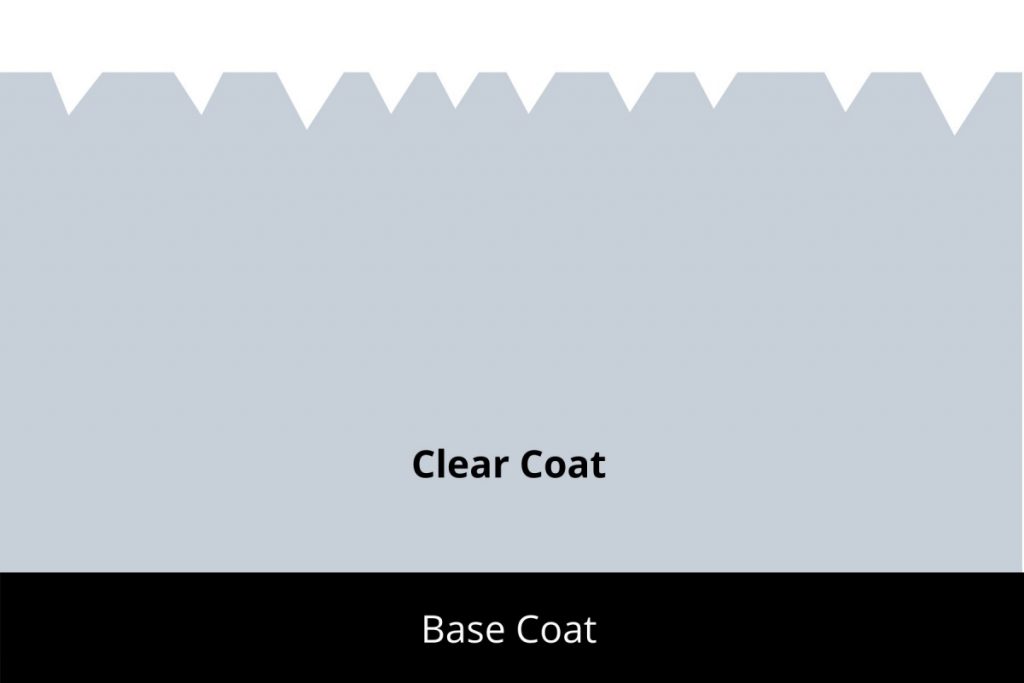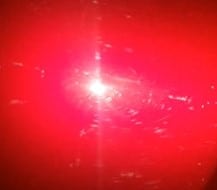Swirl marks can be seen all the time on a variety of cars, ranging from budget vehicles, to high-end sports cars. But what are they and where do they come from? In this article, I’ll be answering the questions, does every car have swirl marks? So let’s get started.
The Quick Answer
Most cars have swirl marks, even brand new ones, due to poor wash technique which scratches the paintwork. This involves using brushes and sponges which scratch the finish, or taking the vehicle to an automatic car wash.
What Are Swirl Marks?
Before we go any further, let’s talk about what swirl marks actually are.
Swirl marks are essentially, very fine (shallow) scratches in the clear coat of a car. A car’s paintwork consists of several layers. The most important to most owners, are the base coat, which provides the colour of the car, and the clear coat that sits on top.

The clear coat is designed to protect the colour underneath from fading and oxidation due to UV damage, dirt and other forms of contamination such as tar, bird mess and water spots.
Despite this protective role, the clear coat is actually quite delicate, and easily scratched.
Scratches, or swirls, in the clear coat are not often seen in dull lighting. However, under direct sunlight, they are very obvious. They often take on the appearance of spider webs, or can look more like swirling.


What Causes Them?
So where do they come from then?
The number one cause of swirl marks is poor wash technique when cleaning the car. This includes using the wrong tools, or being too aggressive when wiping dirt across the panels.
Like I said earlier, the clear coat is very delicate, and can therefore be easily scratched when it comes into contact with friction. The most common place for this friction to occur, is when washing, because it’s really the only time you’re touching the whole car.
There are tonnes of ways this friction is increased to a level at which it becomes dangerous towards the clear coat. Here are some of the most common.
- Use tools like sponges and brushes on the paint.
- Drying a car with a water blade (squeegee), bath towel or chamois.
- Using dirty tools that haven’t been rinsed properly.
- Dry wiping dirt and dust across the panels.
- Using a poor quality car shampoo that doesn’t lubricate the paintwork.
- When washing a very dirty car.
- Automatic car washes (due to all the reasons above!).
Check out this article to learn how automatic car washes can ruin the paint by causing swirls and scratches.
Luckily, these can all be avoided by learning how to properly wash the vehicle properly, to keep the paintwork scratch and swirl-mark free.
Check out this complete guide to washing your car without causing scratches.
Do They Exist on Brand New Cars?
So this is usually the next question that people ask at this point. Surely brand new vehicles don’t have these swirl marks? Unfortunately, this is rarely the case.
Most brand new cars have swirl marks and scratches in the clear coat because they have been washed improperly at the dealership using sponges and brushes due to time constrains.
The dealership valeters are under a lot of pressure to wash a high volume of cars in a short space of time. This limits how much time is available to properly clean the equipment, and be gentle on the paintwork to reduce the friction which creates these swirl marks.
But what about high-end vehicles?
Unfortunately, often premium vehicles also have scratches and swirl marks for the reasons discussed above. Even vehicles worth over 6-figures often have swirl marks when they are first purchased.
Tips When Buying a Brand New Car
If you’re purchasing a brand new vehicle, then it’s a good idea to ask the dealership NOT to wash the car before you collect it. Although someone may have got their hands on it before it came to the dealership, swirl marks can sometimes be avoided by doing this. So ask for all the wrappings to be left on the car and removed by yourself when you arrive.
If you have already seen the car you’re buying in the showroom, then ask for it not to be washed again before collection, because at least this way you’re reducing the risk of further damage.
Don’t be afraid to refuse the car you’re given if, on the day of collection, you’re not happy with the condition of the paintwork.
I’ve not done this personally, but I know of friends that have ordered a car from the factory, and were not happy with the paintwork when it arrived at the dealership. The salesperson understood, and a new car was ordered.
It may seem a bit awkward, but cars are very expensive, so don’t be afraid to put your foot down!
How to Fix Them
Most cars have swirl marks, and the vast majority of car owners don’t even notice. But if you’ve spotted them on your vehicle, then you might be looking for a way to get rid of them.
The first thing you need to do, is learn how to properly wash the car to avoid inflicting this clear coat damage. So if you’ve not read it already, then check out this article on how to wash a car without causing scratches to find out everything you need to know, in a step-by-step guide.
There are two ways to deal with swirl marks. You can either mask or hide them, using a paintwork glaze, or correct them which involves removing a layer of paint to reveal a flat, fresh surface, free from imperfections.
Both options can be very effective, but will suit different needs and skill levels.
Take a look at this comparison between paint correction and glazes to find out which option is best for you.
Frequently Asked Questions
Don’t worry if you still need some more answers! Here are the answers to some of the most commonly asked questions about this topic.
Do black cars have more swirl marks than other colours?
Black cars show swirl marks more obviously than lighter colours. This is because the light reflects unevenly when swirl marks are present, which shows up more on darker backgrounds.
Are swirl marks permanent?
Swirl marks are not permanent and can be removed using paint correction techniques known as compounding and polishing. This involves removing the layer of damaged clear coat, to reveal a flat surface that is free from imperfections.
Take a look at this guide to polishing your car which takes you thorough all the equipment you’ll need, to get professional level results.
Thanks for reading! I hope you’ve found this article useful. Don’t forget to check out the rest of the website to learn everything you need to know about making your car look its best.

